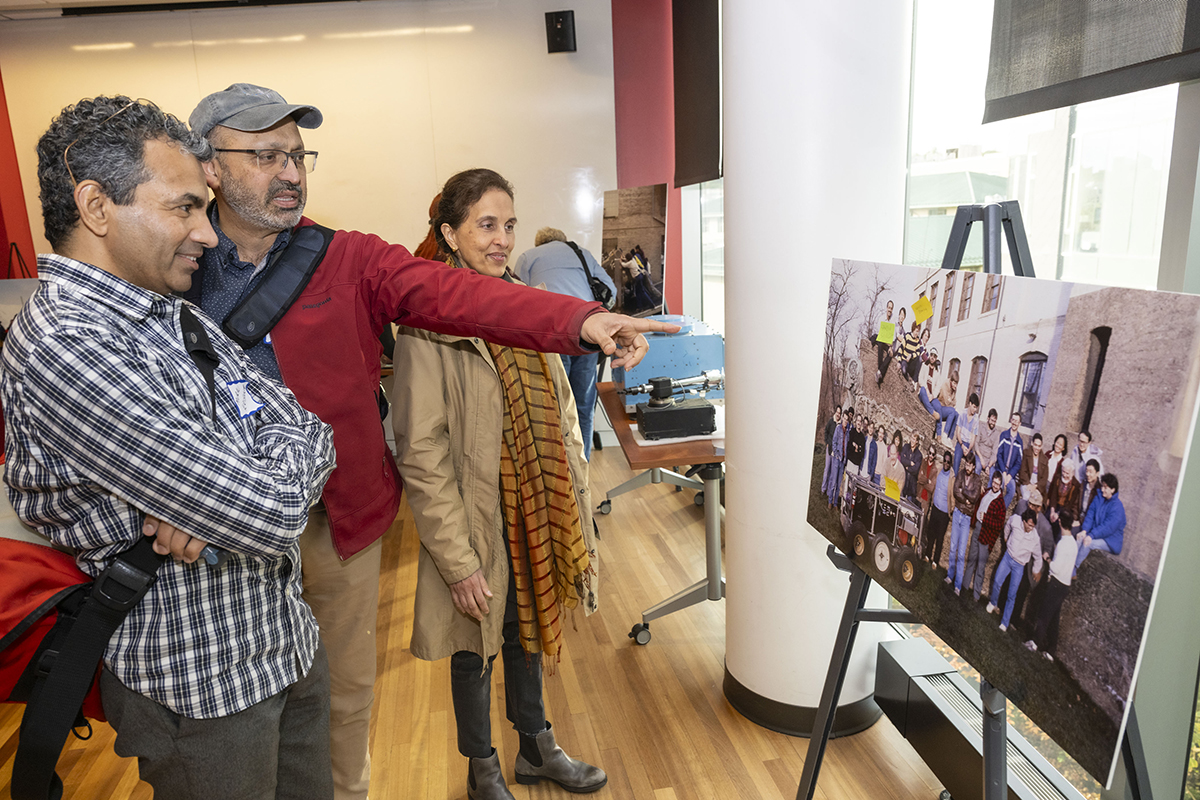
Attendees, including alums Murali Krishna and Sanjiv Singh, pictured here, were able to look back on their time with the Field Robotics Center and help archivists identify people and projects in photographs.
On October 20 and 21, current and former faculty, staff, and students gathered to reminisce about their time at the Field Robotics Center (FRC) at “The Robotics Project Celebrates Field Robotics at 40” during the FRC’s 40th anniversary celebration.
The University Archives is proud to be the home of The Robotics Project, a multi-phase, multi-year partnership between the University Libraries and the School of Computer Science to preserve the past, present, and future of robotics. The goal of the project is to capture a wide breadth of stories about the research, impact, and experiences of the robotics community across the university and around the world by preserving collections and sharing them through educational and public programming. Field robotics, the use of mobile robots in field environments like work sites and natural terrain, is an important piece of that history.
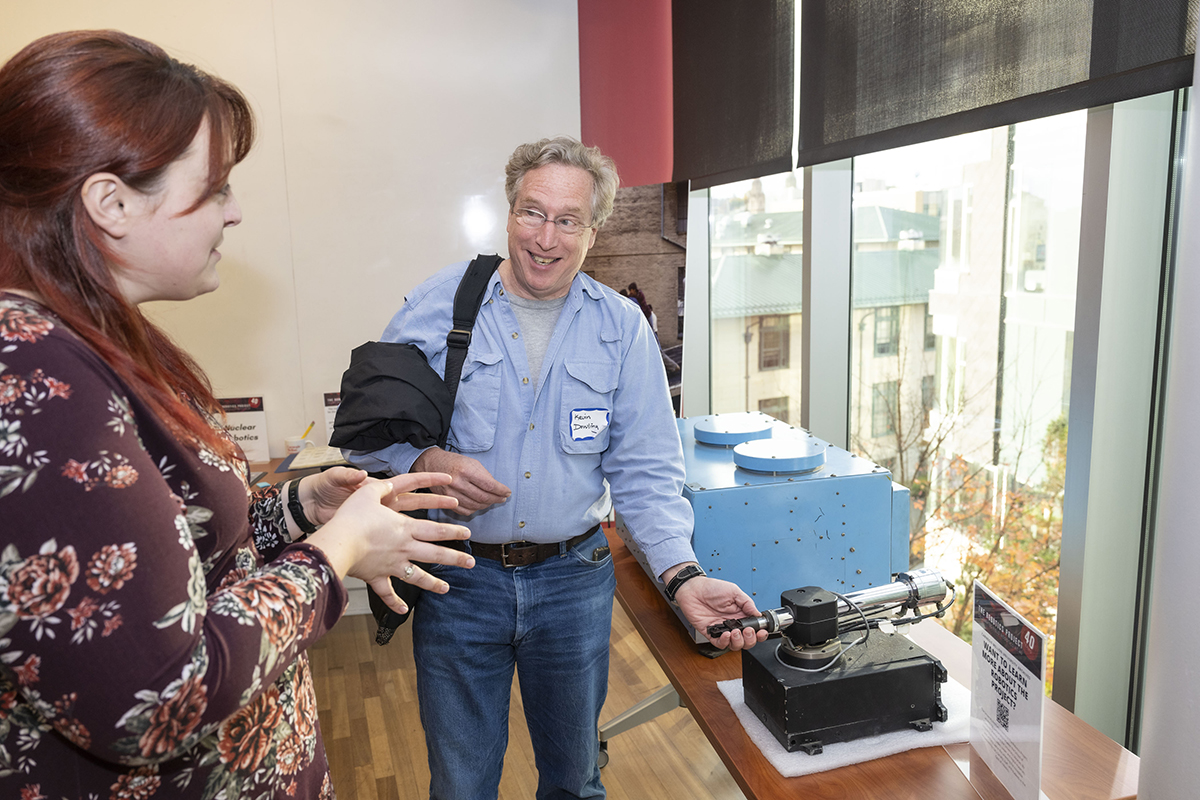
Kevin Dowling (MCS 1983; SCS 1994, 1997), who attended both days of the event, has an extensive background in robotics at CMU. “I began as an undergraduate in the Robotics Institute (RI) soon after it was formed in December of 1979 and, by some accounts, am the first employee,” he explained. “This is because the faculty involved in the RI were in other departments at the time.”
Dowling worked part-time during the semester and full-time during summers at the RI with Art Sanderson’s Flexible Assembly Laboratory, and after graduation in 1983 joined Hans Moravec, who was the director of the Mobile Robotics Laboratory (MRL) at Carnegie Mellon from 1980 until 2005. At the MRL, they built and tested indoor mobile robots to navigate indoor spaces.
At the event, Dowling and other attendees celebrated the legacy of field robotics at CMU and connected with archivists, who were on hand to share photos, memorabilia, and other related historical documents. Attendees reflected on the projects they created and the people they worked with at the FRC, and assisted archivists in identifying materials already donated to the archive to provide further context for future research. On the second day of the event, Dowling even brought project t-shirts to donate to the Archives, which he said “capture the excitement and energy of a project.”
“Events like these are so important, because we’re able to learn about these projects and this community directly from people who lived it. There’s sometimes context that the materials in the Robot Archive might be missing, but alumni and current and former staff and faculty can help us bridge those gaps,” said Kathleen Donahoe, lead archivist of the Robotics Project. “Something like the project t-shirts can include information on team members, dates, and locations that we might not be able to find elsewhere — not to mention incredible artwork designed for each one.”
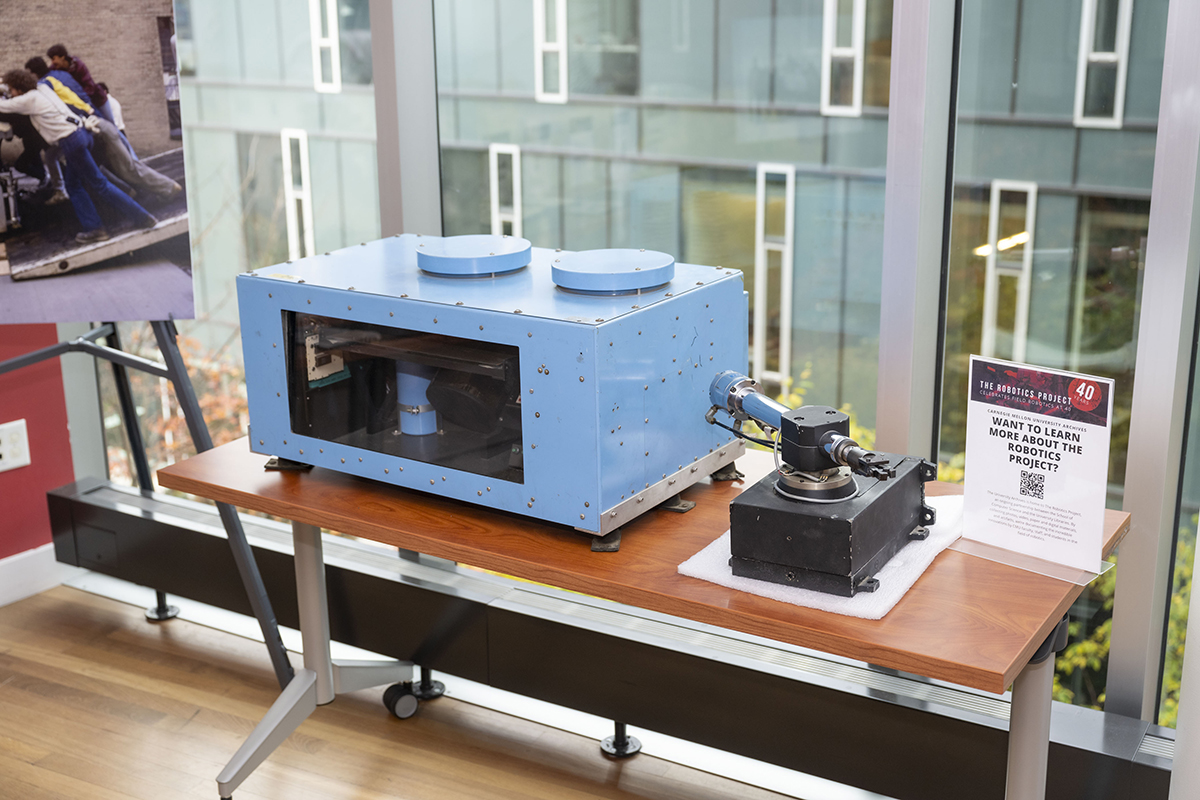
The display featured artifacts from the Archives, including an early ERIM sensor and a SEIKO robotic arm. The SEIKO robot in particular caught Dowling’s eye as a project he helped bring to life.
“This robot was entirely pneumatic, and there was some discussion as to whether or not it was a robot due to its simplicity. In time, I added internal and external sensing and complex grippers which left no doubt about its robotic nature. Defining a robot as the holy trinity of sense, plan, act held true,” Dowling remembered.
“It was to be part of a Flexible Assembly Station (FAS) for Westinghouse's defense electronics division,” Dowling continued. “This was a project led by Art Sanderson, and I built hardware and electronics to support the project. The techniques were patented — here is the first Robotics Institute patent as far as I know, and the first of my many patents: US4529315.”
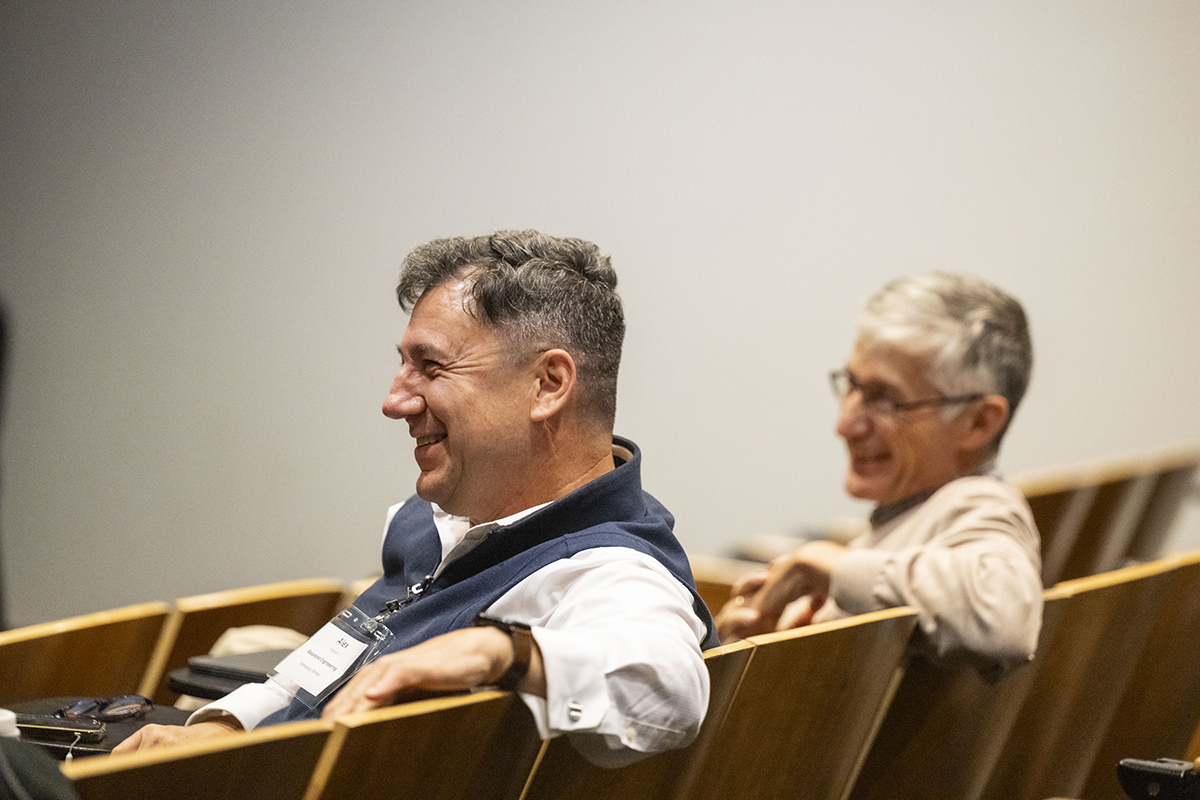
Alex Foessel (SCS 2002), another attendee, came to CMU to pursue a Ph.D. in robotics in 1996. Growing up on a ranch in Chile, he developed an interest in agriculture automation that led to an early career at John Deere and his current role as managing partner at Balanced Engineering. But at CMU, one of Foessel’s biggest projects was an expedition to Antarctica to search for meteorites, a journey that challenged the team in unexpected ways.
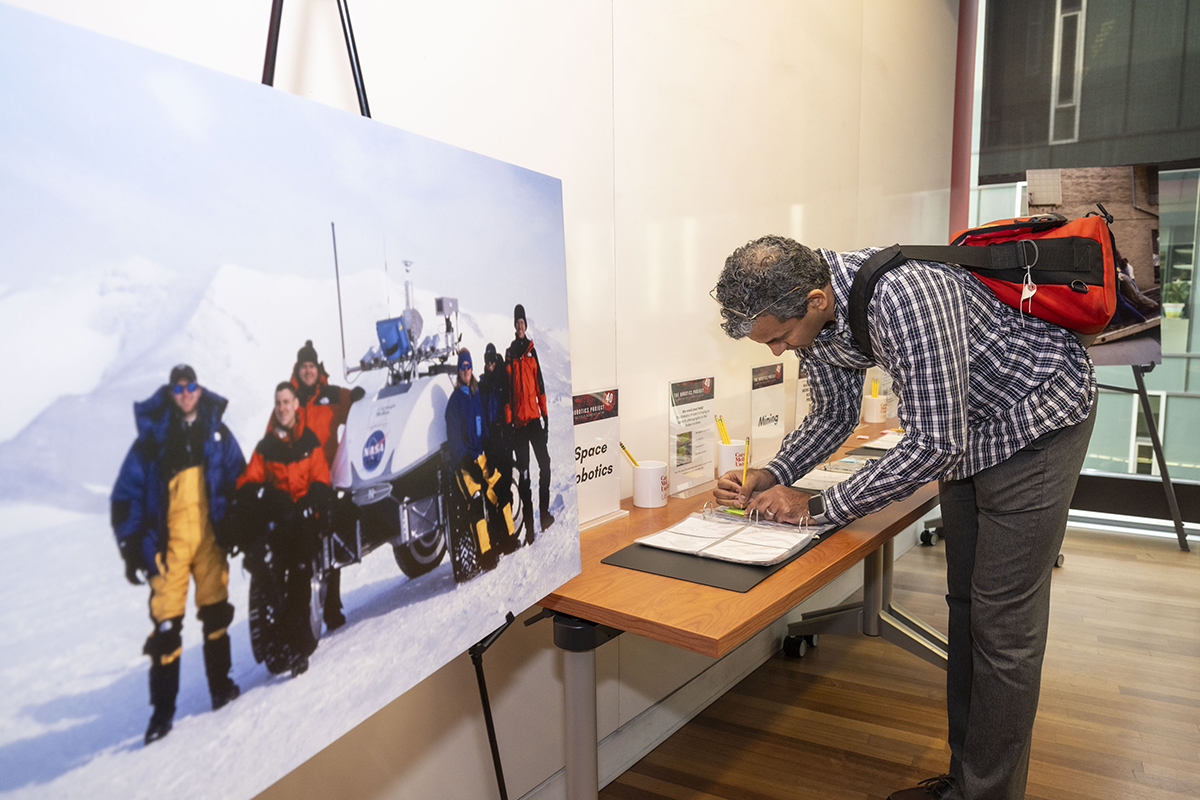
“We made all the preparations, landed, and started all of the readiness tests to know that the robot was good to go. But two weeks in, when we were just getting started with the actual science, the gasoline engine of the robot’s internal generator seized,” Foessel recalled. “We were in the middle of an ice field in Antarctica with temperatures reaching minus 40 degrees, and no way to get in or out until the next aircraft came 15 days later to pick us up. We were in despair — we couldn’t believe that so much time and money had been put into this, and we were going to fail our mission.”
“The generator was never going to work again, and we didn’t have the tools to open up the robot and put another generator inside,” he added. “So finally, we tied a sled in the back of the robot and connected an external generator. After that, despite the challenges, the rest of the expedition was very successful. That showed the team’s determination.”
By bringing together the FRC community, the event reinforced the importance of including personal anecdotes and memories when recording the history of robotics on campus.
“Without the storage of artifacts and the collection of stories, the true and complete history of the Robotics Institute and the FRC will be lost,” Dowling said. “Saving original academic papers would be a simple way to say we have done our job, but this is not enough — it’s the stories of the people involved, the failures and the successes. Getting to know the personalities of those involved tells an even greater story of the Robotics Institute and why it has been so successful.”
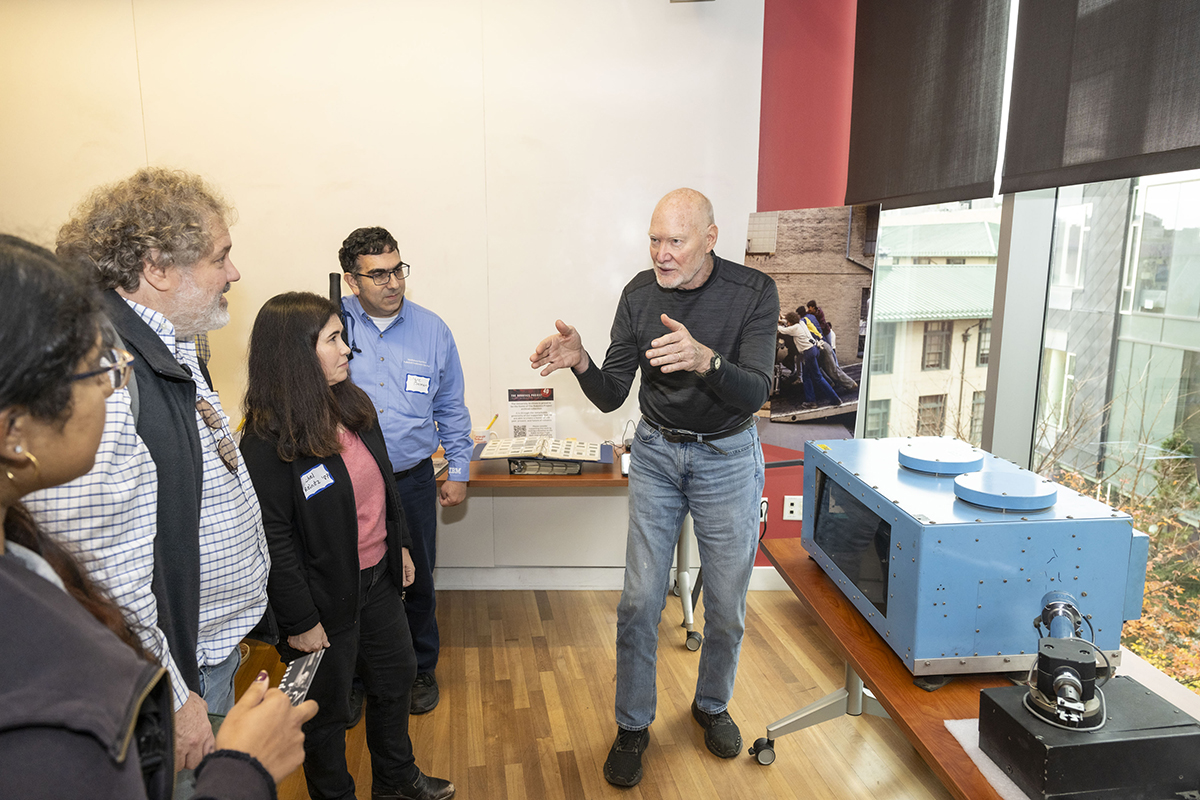
Engaging with historic items from the past also offered an opportunity for generations of experts to put their heads together and dream big about the future of the field.
“At the event, we got a very interesting network of people together and had conversations related to space robots, to autonomous navigation robots, to agriculture robots, and even to robots cleaning nuclear disasters. Each one of these panels was an opportunity to look back at how much the technology has changed — we were able to reflect on the past, and then use that reflection to propel the field into the future,” Foessel said. “Through the Robotics Institute, and specifically the FRC, Carnegie Mellon has been able to show the world what is possible. And once you see what’s possible, there’s no going back — it makes the world go forward.”
To view additional items from the Robotics Project archival collection, get in touch with the Archives or stop by open hours on Thursdays from 10 a.m. to 4 p.m. You can support this work with a gift to the Robot Archive Fund. Community members are also invited to consider donating their own materials related to field robotics to the Archives. Please contact Donahoe at kdonahoe@andrew.cmu.edu to learn more.
by Sarah Bender, Communications Coordinator
